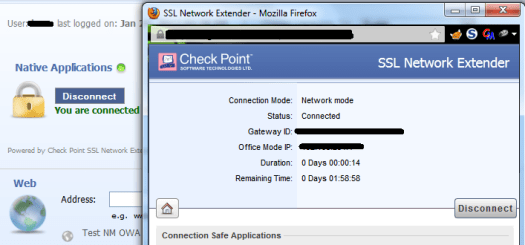The WebUI default access port is HTTPS 443. This can conflict when installing some Check Point products, e.g. Endpoint Security Server. In order to mitigate this, change the default webUI port as follows:
SecurePlatform
Log in to the SecurePlatform CLI in Standard mode, and run this command:
webui enable <port_number>
You should see the following:
Shutting down cp_http_server_wd [OK]
Shutting down cpwmd_wd [OK]
Running cp_http_server_wd [OK]
Running cpwmd_wd [OK]
To disable access to the WebUI, run the command:
webui disable
Gaia
To set the Webui port on Gaia enter clish and run:
CLISH> set web ssl-port <port number>
CLISH> save config
** Please read below – this must also be mirrored through SmartDashboard otherwise every policy installation will revert to the default 443 **
To change it through SmartDashboard:
Open ‘SmartDashboard > gateway/cluster object > platform portal’, and in the “Main URL” add the relevant port, for example:
https://143.100.80.100:xxx
This will force the machine to use port xxx. In the case of a cluster, this will also work for both members.
If this is not changed, every policy installation will change the port back to the default 443.











